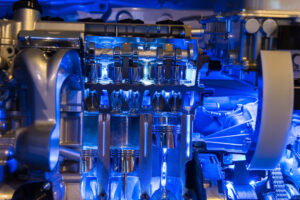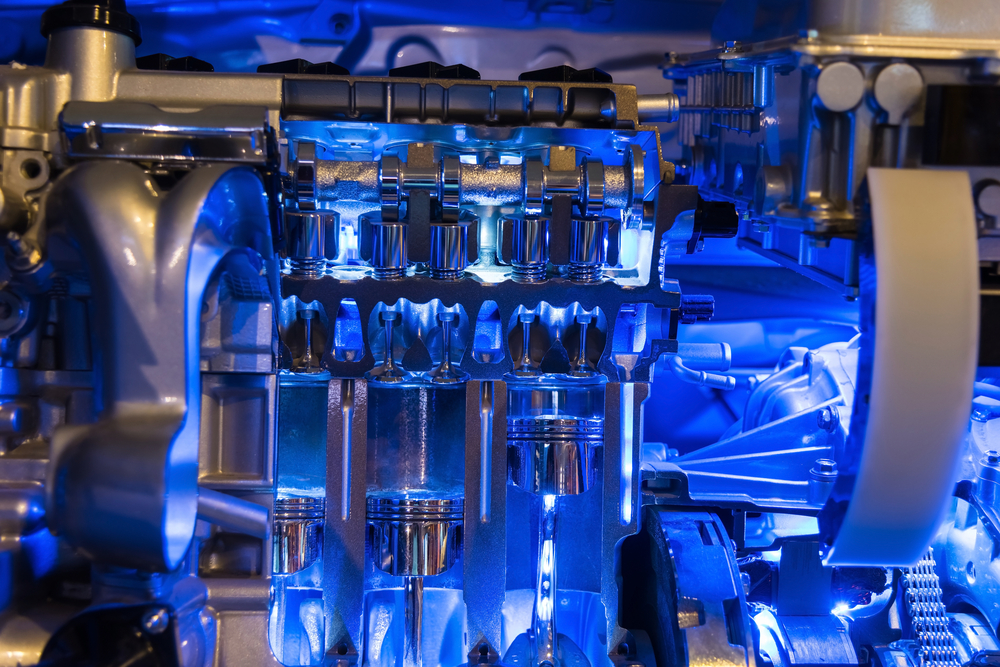
In 1885 Gottlieb Daimler built what many consider the first gas-fueled internal combustion engine (ICE). Since then engineers have made ICEs vastly more powerful, efficient, and clean. Still, there’s lots of room for improvement: Smart-engine technology can drastically boost power and efficiency while reducing emissions even further.
How? It’s all in the timing.
Modern gasoline ICEs have four cycles: Intake, compression, power, and exhaust. First, the cylinder moves down, creating a vacuum and pulling in a mix of air and fuel. Then the cylinder moves up and compresses the mixture. A spark ignites the mixture, triggering an explosion that pushes the piston down to create power. In the final stage, the cylinder moves back up, pushing exhaust gas out through a valve.
It all happens in fractions of a second with multiple valves opening and closing to allow air and fuel into the engine and exhaust out. Initially, the process was timed mechanically using cams, pushrods, gears, or belts. As technology progressed, however, the timing of the spark, and the delivery of the air and fuel could be controlled electronically and even adjusted in real time based on sensor data from the engine. This precision control led to huge leaps in power and efficiency in the early ‘90s. Electronic fuel injection allowed engineers to precisely synchronize every cycle of the combustion engine’s intricate dance. But that was just the beginning.
The average fuel economy for US passenger cars in 1980 was 24.3 mpg (9.7 l/100km). By 2013 the average had increased to 36 mpg or 6.5 l/100km (including hybrids and diesel cars). And today’s engines are a lot more powerful. While standard passenger cars in 1980 had around 100 horsepower, today’s passenger cars have nearly twice as much power.
The modern ICE is alive with sensors and processors. Sensors monitor the air going into the engine, the air/fuel mixture being burned, the exhaust gasses, spark efficiency, emissions, and more. Engines with a turbocharger and electronically controlled transmission need even more sensors. All this info is streamed in real time to the Engine Control Unit (ECU), the brain of the car. The ECU processes all of this data and continuously adjusts everything from engine timing to fuel mixture to the transmission shift points to optimize performance and efficiency in real time.
Today’s ECUs have as much processing power as top-of-the-line laptops. And in the future, even more engine components will be computer controlled. For example, many automotive manufacturers are engineering computer-controlled valve systems that will allow them to fine tune the combustion process even more.
Built Tough
ECUs have to withstand harsh conditions under the hood, where temperatures often approach 100°C. They also have to work flawlessly for the life of the vehicle—20 years or more. Because of this, they’re built to ultra-high standards that approach or even surpass aerospace applications.
We manufacture a wide range of ECUs, controllers, and sensors, including:
- 32-bit Automotive Microcontrollers based on market-proven Power Architecture cores;
- Standard Low-side, High-side and Bridge Smart Power Devices for driving DC and stepper motors and solenoids;
- Dedicated ICs for actuator driving, charging, and power management;
- One of the industry’s broadest ranges of Power MOSFETs and IGBTs.
We also work closely with manufacturers to create faster and better electronic components to deliver outstanding performance and reliability in all of our automotive components.
